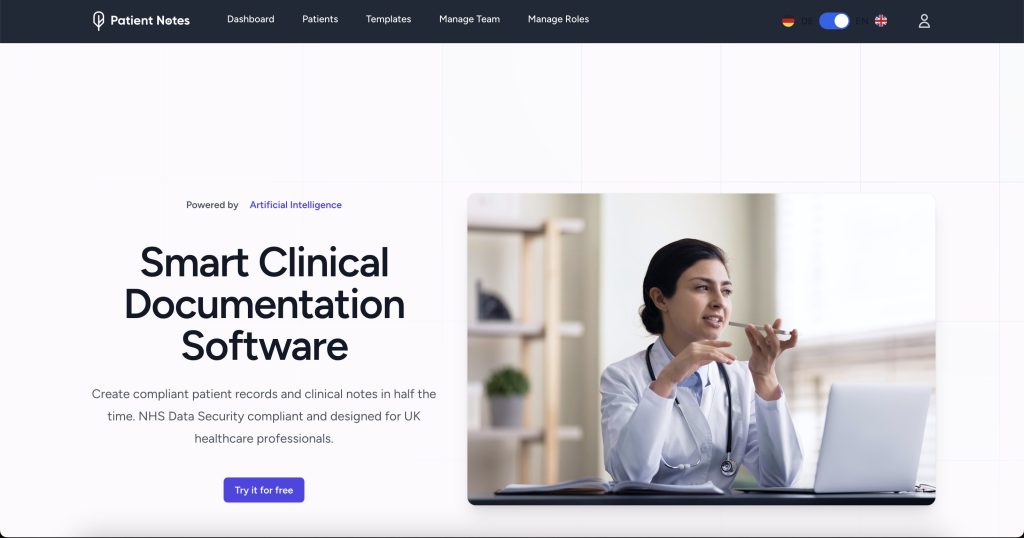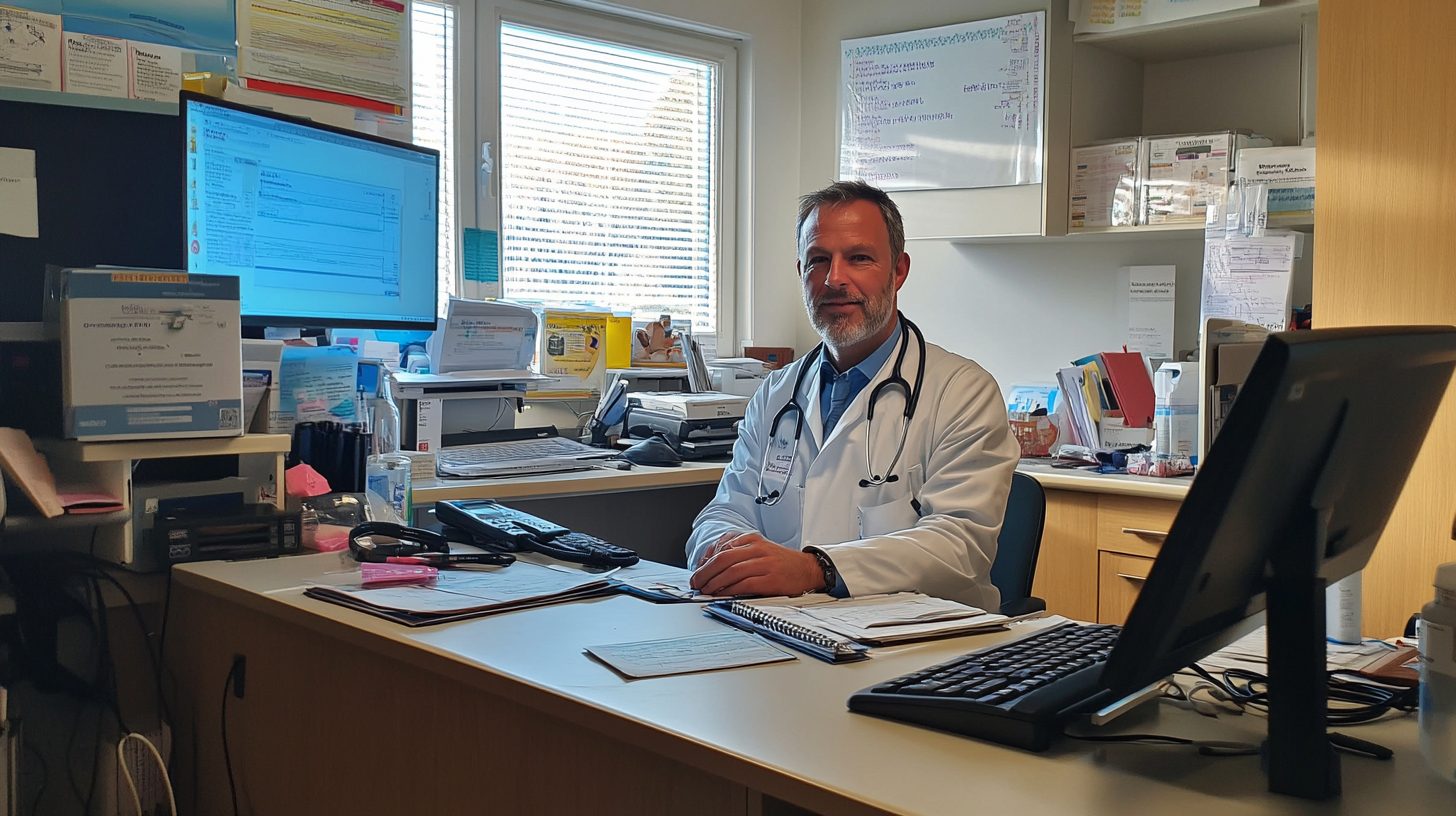Introduction
In today’s healthcare landscape, medical practices face mounting pressures to deliver quality patient care whilst operating with fewer resources. The ongoing staffing challenges across the healthcare sector have made optimising practice efficiency not just beneficial but essential for survival.
This comprehensive guide explores practical strategies to enhance your medical practice’s efficiency with a smaller team, helping you maintain high standards of care whilst maximising your resources.
Why Medical Practice Efficiency Matters in 2025
Medical practice efficiency directly impacts both patient satisfaction and your bottom line. When your practice runs smoothly, patients receive timely care, staff experience less burnout, and your practice generates more revenue. Conversely, inefficient processes lead to wasted resources, frustrated patients, and potentially compromised care quality.
With the healthcare landscape continuing to evolve rapidly, practices that adapt and streamline their operations will thrive, whilst those that cling to outdated workflows risk falling behind.
13 Proven Strategies to Improve Medical Practice Efficiency
1. Eliminate Paper-Based Processes
Paper documentation is a major time drain for healthcare providers. Converting to paperless workflows delivers immediate efficiency gains:
- Replace manual vitals recording with smart devices that automatically capture and upload readings
- Implement e-prescribing to eliminate prescription pad usage
- Use digital consent forms patients can complete before appointments
- Adopt digital signature technology for documentation
Impact: Clinical staff report saving 1-2 hours daily after eliminating paper processes, allowing them to see approximately 3-4 additional patients per day.
2. Prioritise Physician Time for Direct Patient Care
Physicians should focus primarily on activities that require their expertise—direct patient interactions and clinical decision-making. Analyse how your physicians currently spend their day and identify non-clinical tasks that could be delegated:
- Route routine prescription refills to nursing staff
- Delegate insurance verification to administrative staff
- Create templates for common documentation scenarios
- Use medical assistants for pre-visit planning and preliminary documentation
Impact: Studies show physicians spend up to 49% of their workday on administrative tasks. Reducing this burden by even 25% could add several additional patient slots daily.
3. Optimise EMR/EHR Templates and Functionality
Your electronic health record system should serve your workflow, not hinder it. Invest time in customising and mastering your EMR/EHR:
- Create templates for common visit types in your practice
- Learn and utilise keyboard shortcuts and “dot phrases”
- Customise dashboards for different staff roles
- Schedule regular refresher training for all staff
Impact: Properly optimised EHR templates can reduce documentation time by up to 40% per patient encounter.
4. Implement AI-Powered Documentation Solutions
Documentation burdens represent one of the largest time expenditures for medical practices. Solutions like PatientNotes.AI can dramatically reduce this workload:
PatientNotes.AI uses advanced artificial intelligence to:
- Generate comprehensive clinical notes from patient encounters
- Transcribe and structure patient-provider conversations in real-time
- Extract relevant clinical information and populate appropriate sections of the EHR
- Ensure clinical documentation is accurate and compliant

Impact: Practices using AI documentation tools like PatientNotes.AI report documentation time reductions of 60-70%, allowing providers to see 3-5 more patients daily or finish their administrative work during regular hours.
5. Adopt Strategic Hiring Practices
Staff turnover disrupts efficiency and drains resources. In today’s competitive hiring environment, a strategic approach is essential:
- Create detailed job descriptions that accurately reflect role responsibilities
- Develop structured interview processes focusing on both skills and cultural fit
- Implement thorough onboarding programmes to accelerate new hire productivity
- Consider flexible scheduling options to attract qualified candidates
Impact: Reducing annual staff turnover by even 5% can save a typical practice £10,000-£15,000 in recruitment and training costs.
6. Train Support Staff as “Gatekeepers”
Your support staff should serve as effective buffers, protecting physician time for direct patient care:
- Develop clear protocols for which issues require physician attention
- Train staff to resolve routine matters independently
- Implement structured communication channels for escalating truly urgent issues
- Create documentation for common patient questions so staff can answer confidently
Impact: Effective “gatekeeping” can reduce physician interruptions by 30-40%, allowing them to maintain focus on patient care.
7. Implement Advanced Scheduling Systems
Your scheduling system forms the backbone of practice efficiency:
- Use predictive scheduling based on historical appointment durations
- Implement modified wave scheduling to minimise provider downtime
- Utilise automated systems to fill cancellations and no-shows
- Consider dedicated slots for same-day appointments
Impact: Optimised scheduling can increase practice capacity by 10-15% without additional staffing.
Scheduling System Optimisation Checklist
- ✓ Review historical appointment data to identify optimal time slots
- ✓ Configure automated appointment reminders via SMS and email
- ✓ Implement pre-appointment questionnaires for patients
- ✓ Set up waitlist functionality for filling cancellations
- ✓ Train staff on handling common scheduling scenarios
8. Minimise No-Shows and Appointment Gaps
No-shows and unfilled appointment slots directly impact revenue and efficiency:
- Implement multi-channel appointment reminders (SMS, email, phone)
- Require confirmation of appointments 24-48 hours in advance
- Maintain active waitlists for patients seeking earlier appointments
- Consider implementing modest no-show fees
Impact: Effective no-show management can reduce rates from the industry average of 18-20% down to 5-7%, representing significant revenue recovery.
9. Streamline Patient Check-In and Check-Out
Front desk processes often create bottlenecks that affect the entire practice flow:
- Implement digital pre-registration for new patients
- Use kiosks or mobile check-in options
- Process payments electronically
- Schedule follow-up appointments at the time of service
Impact: Digital check-in solutions reduce front desk workload by approximately 30% and decrease patient wait times by 15-20 minutes.
10. Map Clinical Workflows from the Patient Perspective
Understanding the patient journey through your practice helps identify inefficiencies:
- Track actual patient flow times through various touchpoints
- Consider employing “mystery shoppers” to provide objective feedback
- Gather patient feedback through surveys specifically about efficiency
- Map out each step of common patient encounters and look for redundancies
Impact: Streamlined patient workflows can reduce total visit time by 20-30 minutes while improving satisfaction scores.
11. Customise EHR Interfaces for Clinical Roles
One-size-fits-all EHR interfaces decrease efficiency. Each clinical role needs specific information presented effectively:
- Create role-specific dashboards and views
- Customise order sets for common scenarios
- Develop speciality-specific templates
- Arrange regular optimisation sessions with your EHR vendor
Impact: Customised EHR interfaces reduce documentation time by 25-30% compared to default configurations.
12. Select Technology Partners Strategically
Your technology ecosystem directly impacts operational efficiency:
- Prioritise integration capabilities when selecting new systems
- Evaluate vendor support availability and response times
- Consider implementation timeframes and training requirements
- Check compatibility with existing systems before purchasing
Impact: Practices with well-integrated technology stacks report 22% higher productivity than those with disparate systems.
13. Implement Continuous Performance Monitoring
Efficiency improvement requires ongoing monitoring and adjustment:
- Track key performance indicators (KPIs) like patient wait times, provider productivity, and revenue per visit
- Conduct regular staff feedback sessions focused on workflow improvements
- Review patient satisfaction data for efficiency-related concerns
- Schedule quarterly efficiency audits
Impact: Practices that implement formal performance monitoring see continued improvement in efficiency metrics of 3-5% annually versus plateauing after initial improvements.
Common Efficiency Challenges and Solutions
Case Study: How One Primary Care Practice Transformed Efficiency
Greenway Medical Associates, a five-physician primary care practice in West London, faced significant staffing challenges in early 2024. After losing two administrative staff members and one nurse practitioner, they implemented several efficiency measures:
- Documentation Revolution: Implemented PatientNotes.AI for automated clinical documentation, reducing provider documentation time from 2 hours to 35 minutes daily
- Process Redesign: Mapped and restructured patient flow from check-in to check-out, eliminating redundant steps
- Staff Cross-Training: Developed cross-functional capabilities among remaining staff to cover essential functions
- Technology Integration: Ensured seamless data flow between scheduling, EHR, and billing systems
Results after 6 months:
- 27% increase in daily patient volume
- 94% patient satisfaction rating (up from 82%)
- £75,000 increase in quarterly revenue
- Reduced staff overtime by 85%
Implementation Timeline: A Phased Approach to Efficiency Improvement
Implementing efficiency improvements requires a structured approach to avoid overwhelming staff or disrupting patient care:
Phase 1 (Weeks 1-4): Assessment and Quick Wins
- Conduct efficiency audit of current workflows
- Implement no-show reduction measures
- Optimise existing EHR templates
- Deploy PatientNotes.AI for clinical documentation
Phase 2 (Months 2-3): Process Redesign
- Restructure check-in/check-out procedures
- Implement patient flow mapping
- Develop staff cross-training programme
- Configure advanced scheduling optimisation
Phase 3 (Months 4-6): Technology Enhancement
- Integrate key clinical systems
- Deploy mobile solutions for providers
- Implement patient self-service options
- Establish continuous monitoring protocols
Phase 4 (Ongoing): Continuous Improvement
- Regular efficiency audits
- Staff suggestion programme
- Quarterly technology reviews
- Patient experience monitoring
Technology Solutions for Enhanced Practice Efficiency
The right technology investments can dramatically improve practice efficiency:
Clinical Documentation Solutions
PatientNotes.AI represents a breakthrough in clinical documentation efficiency. This AI-powered solution:
- Generates comprehensive clinical notes from patient encounters
- Reduces documentation time by up to 70%
- Ensures consistent, compliant documentation
- Integrates with major EHR systems
- Allows providers to focus on patients instead of keyboards
Patient Engagement Platforms
Modern patient engagement solutions streamline communication:
- Self-scheduling capabilities
- Automated appointment reminders
- Secure messaging
- Digital intake forms
- Remote monitoring integration
Practice Management Systems
Comprehensive practice management systems coordinate all aspects of practice operations:
- Scheduling optimisation
- Claims management
- Reporting and analytics
- Staff productivity tracking
- Resource allocation
Measuring the Impact of Efficiency Improvements
Tracking key metrics helps quantify efficiency gains and identify areas for additional improvement:
Clinical Metrics:
- Patients per provider hour
- Door-to-door time for patient visits
- Documentation completion time
- Order processing time
Operational Metrics:
- No-show rate
- Schedule utilisation percentage
- Patient wait times
- Staff overtime hours
Financial Metrics:
- Revenue per provider hour
- Cost per patient visit
- Collection rate
- Days in accounts receivable
Conclusion: Building a Culture of Efficiency
Creating lasting efficiency improvements requires more than just implementing new technology or processes—it requires cultivating a practice culture that values and rewards efficiency:
- Involve staff in identifying inefficiencies and suggesting solutions
- Recognise and celebrate efficiency improvements
- Provide regular training on efficient workflows
- Empower staff to make process improvements within their areas of responsibility
- Make efficiency a core practice value alongside quality and compassion
By systematically addressing inefficiencies and leveraging modern solutions like PatientNotes.AI, medical practices can not only survive but thrive in today’s challenging healthcare environment.
Key Takeaways
- Documentation Burdens: Implement AI solutions like PatientNotes.AI to dramatically reduce clinical documentation time.
- Process Optimization: Map and streamline workflows from the patient perspective to identify and eliminate bottlenecks.
- Staff Utilization: Train support staff as effective gatekeepers to protect provider time for direct patient care.
- Technology Integration: Ensure your technology ecosystem works seamlessly together to prevent duplicate data entry and information gaps.
- Continuous Improvement: Implement ongoing monitoring and adjustment of efficiency measures to maintain and build upon gains.
- Patient Experience: Efficiency improvements should enhance rather than detract from the patient experience through reduced wait times and increased face-to-face time with providers.
- Balanced Approach: Successful efficiency initiatives balance clinical quality, patient satisfaction, and operational productivity without sacrificing any dimension.



